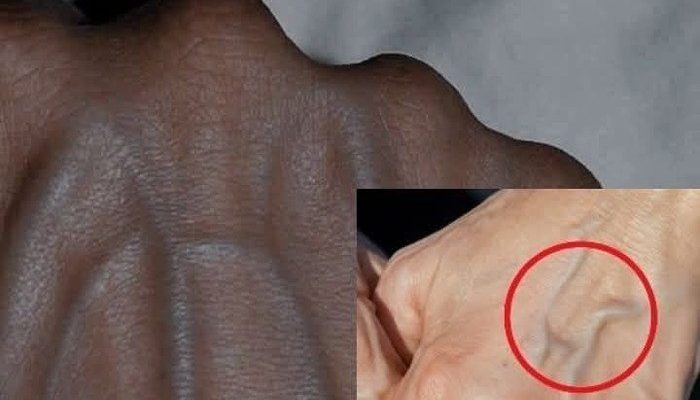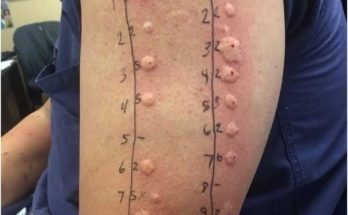Veins play a vital role in your body’s circulation, returning blood to the heart after it has delivered oxygen throughout the tissues. For some people, veins stay faint and barely visible beneath the skin, while for others, they stand out prominently—especially with age, exercise, or lifestyle changes. If you’ve ever looked down at your hands or legs and wondered, “Why are my veins so visible?” you’re not alone. It’s a common concern, often harmless, but sometimes it can hint at an underlying condition worth checking.
Here’s a complete, straightforward guide to understanding visible veins—what causes them, when they’re normal, and when to take them seriously.
Visible veins are typically the result of natural changes in the body. Veins run just beneath the surface of the skin, and several factors influence how clearly they show. Skin thickness, hydration, temperature, and even lighting can make a difference. If you’ve lost weight, exercised recently, or simply aged, you may notice your veins more. Most of the time, it’s not a sign of illness—it’s simply your body being transparent about what’s going on beneath the surface.
Normal Reasons Veins Become More Noticeable
Low Body Fat
People with less fat beneath their skin often have veins that appear more pronounced. This is especially common among athletes, bodybuilders, and those who’ve recently lost weight. When body fat drops, the veins that were always there simply have less insulation to hide behind. This “vascular look” is often a sign of fitness, not a health problem.
Aging and Skin Thinning
As you age, your skin loses collagen and elasticity. It becomes thinner and more translucent, making veins more visible. This is entirely natural and one of the most common cosmetic reasons people notice their veins later in life.
Exercise and Blood Flow
During physical activity, your heart pumps more blood through your muscles. The veins expand to accommodate the surge, often creating that post-workout “pumped” appearance. For highly active people, this can become a more permanent feature due to increased vascular tone and reduced body fat.
Heat and Temperature Changes
Warm weather or hot showers cause blood vessels to dilate as the body tries to cool down. That temporary expansion pushes veins closer to the skin’s surface. Once you cool off, they shrink back to normal.
Genetics
Sometimes, it’s simply hereditary. If your parents or grandparents had prominent veins, there’s a good chance you will too.
When Veins May Indicate a Medical Issue
While most visible veins are benign, some patterns can point to circulation problems or vein disease. Understanding these warning signs can help you catch issues early.
Chronic Venous Insufficiency (CVI)
CVI happens when the valves in your veins weaken and blood struggles to flow upward toward the heart. Instead, it pools in the legs. Symptoms include leg swelling, heaviness, cramping, or skin discoloration around the ankles. Over time, this can lead to varicose veins and, if ignored, ulcers or infections. People who sit or stand for long hours are more at risk.
Varicose Veins
These are the twisted, bulging veins you often see on the legs. They’re usually blue or purple, sometimes painful, and can cause itching or throbbing. They occur when vein walls stretch and valves fail to close properly, letting blood flow backward. While not usually dangerous, they can cause discomfort and cosmetic distress.
Superficial Thrombophlebitis
This is an inflammation caused by a small blood clot in a vein near the skin’s surface. The area can feel warm, hard, and tender. It’s less dangerous than deeper clots but still requires medical evaluation to prevent complications.
Deep Vein Thrombosis (DVT)
This is the serious one—a clot in a deep vein, often in the leg. It can lead to life-threatening complications if it travels to the lungs (a pulmonary embolism). Warning signs include swelling in one leg, pain, redness, and a feeling of heat. If you ever notice these symptoms, seek medical help immediately.
Other Harmless Triggers
Sometimes, visible veins appear suddenly for reasons unrelated to disease. Dehydration, hormonal changes during pregnancy or menopause, or rapid weight loss can all make veins stand out more. Even temporary blood flow shifts from caffeine, stress, or heat can make them pop.
When to See a Doctor
You should check with a healthcare professional if:
- Your veins suddenly become visible without a clear reason
- You experience pain, swelling, or warmth around them
- The skin near your veins changes color or texture
- You have a personal or family history of vein disease or blood clots
A simple evaluation—often an ultrasound—can identify whether the cause is cosmetic or medical.
Managing and Treating Visible Veins
If your veins bother you, whether for comfort or appearance, there are effective ways to manage them.
Lifestyle Changes
Stay active. Movement encourages healthy circulation and prevents blood from pooling in your legs. Maintain a healthy weight to reduce pressure on your veins. Elevate your legs when resting, avoid sitting or standing for long periods, and keep hydrated to improve overall vascular health.
Compression Therapy
Compression stockings apply gentle pressure to the legs, improving blood flow and reducing swelling. They’re especially helpful for people with early signs of varicose veins or who spend much of the day on their feet.
Medical Treatments
For more serious or cosmetic cases, several minimally invasive options exist. Sclerotherapy involves injecting a solution into damaged veins, closing them off so blood reroutes through healthy vessels. Laser or radiofrequency treatments can also shrink or seal veins using heat or light. In severe cases, surgical removal may be recommended.
Prevention and Long-Term Care
You can’t change your genetics, but you can lower your risk of vein problems by maintaining good habits. Drink plenty of water, exercise regularly, avoid smoking, and eat a diet rich in fiber and antioxidants. If you work a desk job or travel often, take short breaks to stretch and move every hour.
Cosmetic and Emotional Aspects
For many people, visible veins are purely aesthetic. Some view them as a sign of vitality or athleticism; others feel self-conscious about them. Both reactions are normal. The key is understanding that veins tell a story about your body — its circulation, health, and changes over time. If they make you uncomfortable, treatments exist. If not, they can simply be accepted as part of who you are.
The Bottom Line
Visible veins are a common part of human anatomy and, in most cases, nothing to worry about. They’re often the result of natural factors like aging, fitness, or temperature, not disease. But when they appear suddenly, cause pain, or are accompanied by swelling or discoloration, it’s worth getting checked out.
Your veins work quietly and tirelessly every day, returning blood to your heart. Paying attention to how they look isn’t vanity—it’s awareness. By understanding the difference between normal visibility and warning signs, you can take better care of your vascular health and catch issues early if they arise.
In the end, your veins are a visible reminder that your body is working hard beneath the surface—proof of motion, age, effort, and life itself. Understanding them is the first step to keeping that system strong and flowing for years to come.



